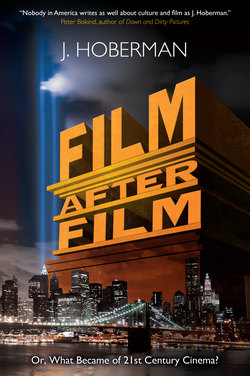Читать книгу Film After Film - J. Hoberman - Страница 17
На сайте Литреса книга снята с продажи.
ОглавлениеCHAPTER TEN
2004: BUSH’S VICTORY
In ten months, George W. Bush would also face the voters. Before that, the single most significant American movie of the post-9/11 decade—not to mention a movie that, in its choice of subject matter, was designed to rival the Events of 9/11 and even put them in perspective—had its much anticipated premiere.
NEW YORK, FEBRUARY 18, 2004
Welcome, friends, to Medieval Times: jihads, crusades, fundamentalist fanatics of all persuasions, and this week, thundering into your neighborhood mall alongside Welcome to Mooseport and Confessions of a Teenage Drama Queen, is Mel Gibson’s $25 million celluloid sacrifice, The Passion of the Christ.1
Less reverential than razzle-dazzlin’, more an episode in the history of show business than a religious epiphany, Gibson’s blood-soaked 126-minute account of Jesus Christ’s last hours on earth has been flogged for months with everything from souvenir nine-inch nails and contested papal endorsements to death threats against New York Times op-ed columnist Frank Rich and bizarre anti-Semitic radio rants by the filmmaker’s eighty-five-year-old father. (Where’s the White House screening?) They do know what they do—the question is, will it do them any good?
The Passion of the Christ opens on a dark and stormy night in what might be a foggy Scottish glen with the Jewish police arriving to arrest Jesus (James Caviezel). His two-fisted, brave-hearted disciples fight back; in an action montage replete with slo-mo and thud-thud, Peter slices off one cop’s ear. Jesus picks it up and reattaches it—a prosthetic miracle that sets the stage for the muscular action and cosmetic wonders to come. Before anything else, The Passion establishes itself in the realm of recent fantasy epics: The Aramaic sounds like bad Elvish, a brief interlude in epicene Herod’s degenerate court suggests a minor detour to the Matrix world, the music is straight out of Gladiator, and much of the movie is haunted by the androgynous, cowled Satan (Rosalinda Celentano) seemingly risen from George Lucas’s cutting room floor.
